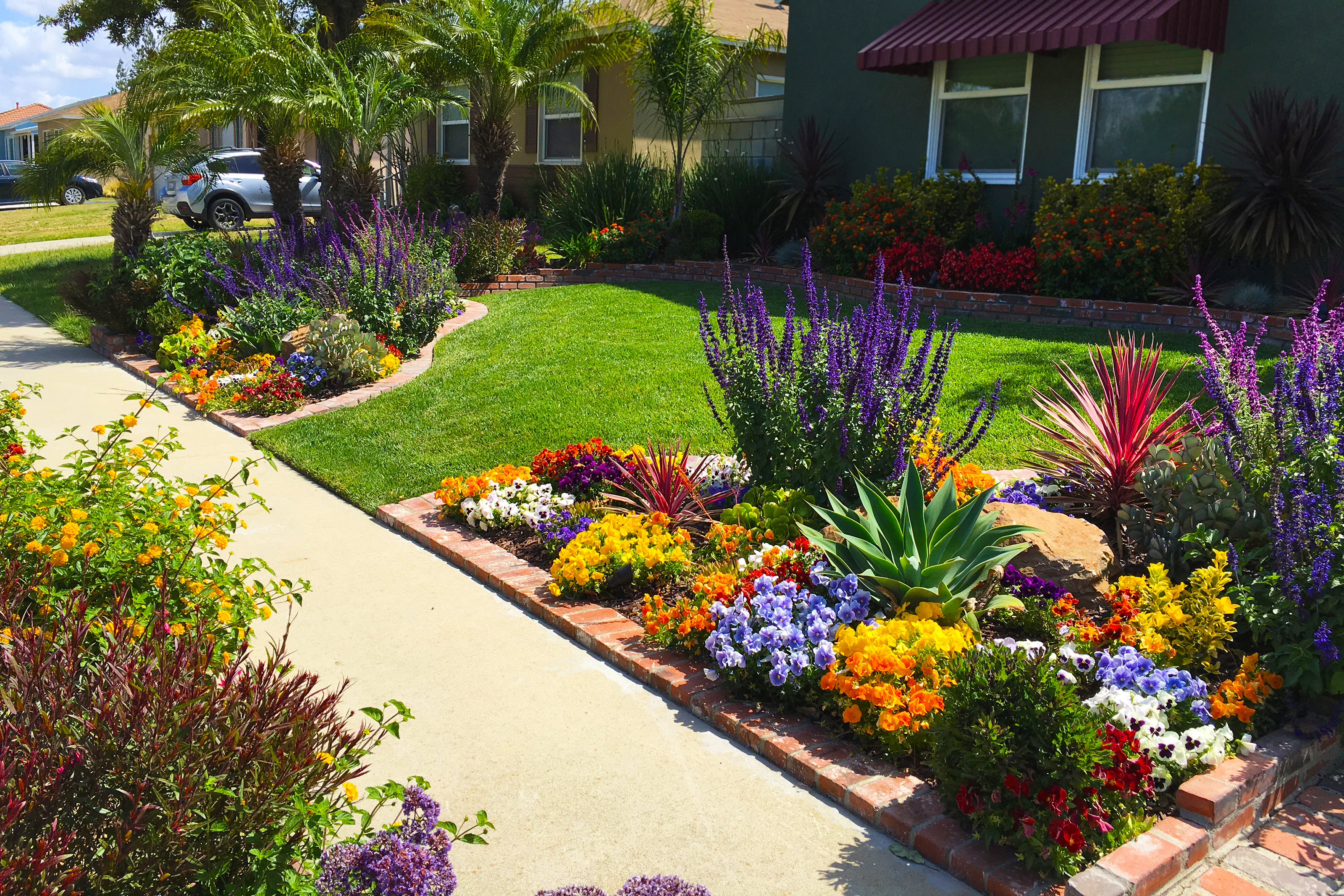A Comprehensive Guide to Designing and Implementing Effective Landscape Design Solutions
The art and scientific research of landscaping extend past plain visual appeals; they include a thoughtful integration of layout principles, ecological stewardship, and useful execution. What strategies can one employ to ensure these landscapes not just flourish however additionally flourish in consistency with their surroundings?

Recognizing Landscape Design Principles
One could wonder what foundational aspects add to efficient landscape layout. At its core, successful landscape design hinges on several vital concepts that lead the plan and option of components within a space. These principles include unity, equilibrium, rhythm, and percentage, each offering to create an unified outdoor atmosphere.
Unity refers to the natural relationship amongst numerous components, guaranteeing that they interact visually and functionally. Balance can be accomplished through in proportion or unbalanced setups, permitting the landscape to really feel secure and welcoming. Percentage involves understanding the scale of elements in regard to each various other and the surrounding setting, promoting visual harmony and comfort.

Examining Your Outdoor Space
Prior to carrying out the concepts of landscape design, a detailed assessment of your exterior area is essential. This initial assessment assists specify the scope of your landscape design job and makes certain that your design aligns with the special features of your residential or commercial property. Begin by examining the measurements of your space, taking specific measurements to understand the available area for different aspects such as gardens, patios, and paths.
Next, observe the existing functions of your landscape, including topography, dirt quality, and water drainage patterns. These variables dramatically affect plant option and positioning. Additionally, examine the sunlight exposure across various areas throughout the day, as this will influence the kinds of plants that thrive in your garden.
Consider the microclimates developed by structures, trees, and various other obstacles, as they can impact temperature level and moisture degrees. Take note of any kind of existing plants or hardscape aspects that you want to preserve or remove. This detailed analysis prepares for a effective and well-informed landscaping service, making certain that your style is not only visually pleasing however sustainable and also functional for many years ahead.
Lasting Landscape Design Strategies
Incorporating lasting landscaping techniques is important for developing an environmentally accountable outside space. These techniques not only promote ecological balance however also boost the aesthetic and practical value of a landscape. One foundational strategy is the usage of indigenous plants, which require less water and maintenance while supporting local official website wildlife. Executing reliable watering systems, such as drip watering, lessens water waste and makes sure that plants receive adequate moisture.

One more reliable technique is the critical positioning of trees and shrubs to give natural windbreaks and shade, therefore lowering energy expenses (Palm Desert Landscaping). Rainfall yards can be incorporated into the landscape style to handle stormwater runoff efficiently, filtering pollutants prior to they enter rivers
Selecting the Right Plants
Choosing the right plants for your landscape is vital to attaining both visual appeal and environmental harmony. The procedure starts with an understanding of your regional climate, soil problems, and the specific microenvironments within your landscape. Examining elements such as sunlight exposure, wetness degrees, and existing vegetations will certainly aid you select plants that thrive in your special setup.
Take into consideration including native plants, as they are well-adapted to local problems, require less upkeep, and assistance regional wildlife. Additionally, choosing a diverse array of varieties can improve biodiversity while reducing the threat of disease and parasite break outs. It is necessary to examine the development habits, blooming periods, and seasonal shades of potential plants to develop a vibrant and cohesive landscape.
In addition, consider the intended usage of the space; as an example, if the location will experience high foot website traffic, choose resistant ground covers. By attentively picking plants that straighten with both your visual objectives and environmental demands, you can create a lasting landscape that not only enhances your residential or commercial property yet also adds positively to the bordering community.

Implementation and Maintenance Strategies
Once the appropriate plants have been picked for your landscape, the emphasis changes to effective execution and ongoing upkeep redirected here strategies. Successful setup begins with correct site preparation, which includes dirt testing to identify nutrient degrees and pH, complied with by amending the soil as needed. Thoroughly set up plants according to their development routines and light demands, guaranteeing appropriate spacing to advertise healthy and balanced growth.
Irrigation is a crucial element of execution. Establish a watering routine that considers the details demands of each plant species, readjusting for seasonal modifications. Making use of drip watering systems can improve water performance and reduce runoff.
Maintenance methods have to be carried out to ensure the longevity and vitality of your landscape. Regular tasks consist of weeding, mulching, and trimming to regulate development and protect against disease. Fertilizing must be carried out based on soil tests, providing the needed nutrients without over-fertilizing.
Checking for diseases and pests is crucial; early detection can avoid considerable damages. Seasonal modifications to maintenance regimens, such as winterizing perennials and preparing for spring growth, will make sure that your landscape remains healthy and visually attractive year-round.
Final Thought
Effective implementation and ongoing maintenance additionally make certain the longevity and vitality of landscapes. By integrating these components, landscapes can be changed into stunning, practical settings that advertise biodiversity and contribute positively to neighborhood well-being.
One may question what fundamental components contribute to efficient landscape design. At its core, successful landscape style pivots on numerous key principles that direct the plan and choice of components within a space.Selecting the right plants for your landscape is vital to attaining both aesthetic allure and eco-friendly consistency. It is essential to evaluate the growth habits, blooming periods, and seasonal colors of potential plants to create a dynamic and natural landscape.
When the appropriate plants have actually been selected for your landscape, the emphasis changes to reliable application and recurring maintenance methods.